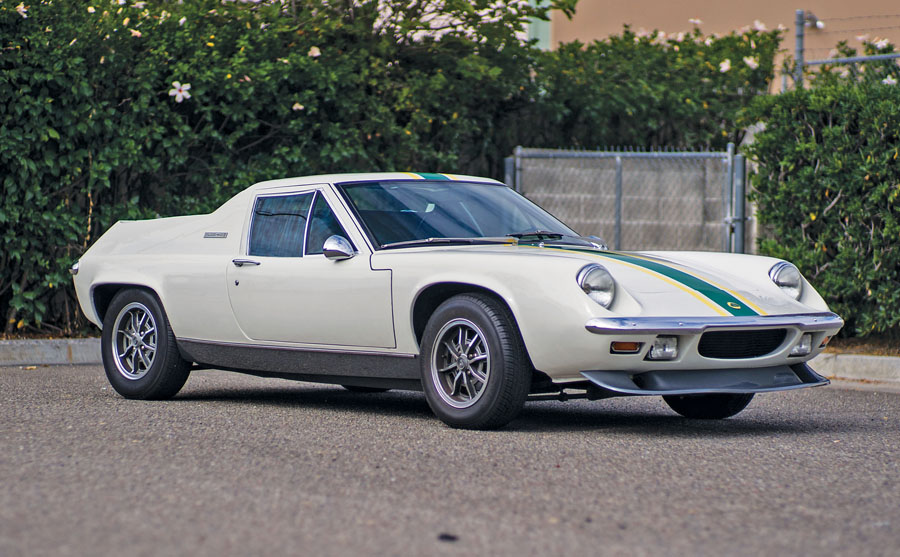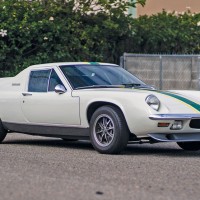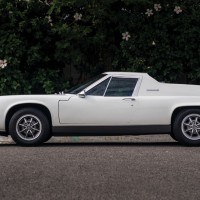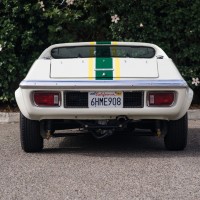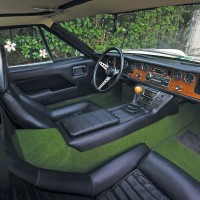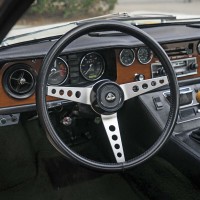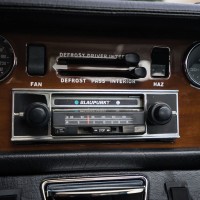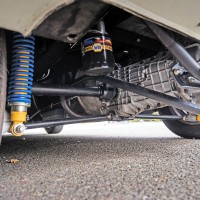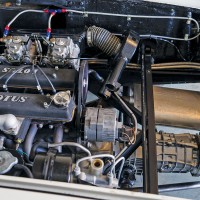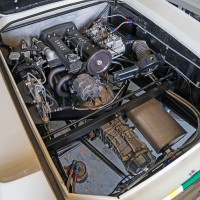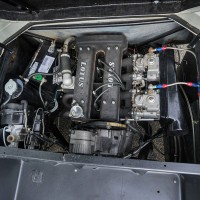SCM Analysis
Detailing
| Years Produced: | 1972–74 |
| Number Produced: | 3,130 |
| Original List Price: | $7,292 |
| SCM Valuation: | $20,000-$35,000 |
| Tune Up Cost: | $200-$300 |
| Distributor Caps: | $25 |
| Chassis Number Location: | Serial number plate on the dashboard and on the inner edge of the left vertical door sill |
| Engine Number Location: | Stamped into the block on top surface next to exhaust manifold |
| Club Info: | Lotus Ltd., P.O. Box L, College Park, MD 20741 |
| Website: | http://www.lotuscarclub.org |
| Alternatives: | 1972–77 TVR 2500M, 1970–72 Marcos Mantis M70, any Formula Vee |
| Investment Grade: | B |
This car, Lot 1051, sold for $33,000, including buyer’s premium, at Auction America’s California auction in Santa Monica, CA, on July 17, 2015.
Like raw oysters, kimchi, haggis and Vegemite, the Lotus Europa is an acquired taste. While many will never acquire a taste for the quirky-looking Europa, those who can get past the platypus face and sushi-knife profile will be rewarded with a driving experience not offered by any of its age peers. The raised eyebrows provoked by the styling are soon replaced by a grin on the first drive.
The Europa was conceived as a street-legal race car, or perhaps a race-spec street car. With vintage Lotus cars, the lines were always blurred. First introduced in 1966, the Europa was Lotus’s entry into the Common Market. The first Europas were equipped with the 1,470-cc Renault 16 engine. The lightweight two-seat coupe with a backbone frame rides on an all-independent Chapman suspension, and a contemporary road tester called it the closest thing to a street-going Formula car.
Indeed, this first mid-engine Lotus inspired road testers to new levels of praise: “You run out of courage before the car runs out of road holding ability,” “The car handles so well and so easily that you can drive around the outside of the track, passing a Mini, while singing a tune and peeling an orange,” and, “You finish your trip more refreshed than when you started.”
However, the Europa was not initially intended for export to the United States, and apart from a few examples filtering into the USA via private importation, it wasn’t until a Federalized version of the Europa S2 was produced in 1968 that they began to arrive in commercial quantity. However, “commercial quantity” is a relative term, and a Europa sighting remained in the same rareness category as unicycles and zeppelins.
Enter the Twink
By 1971 Lotus finally addressed the rearward vision problem produced by the original “bread van” design. Designers cut down the sails on the flanks, which gave drivers a sporting chance at seeing police cruisers pacing them in the next lane. Equally important was the replacement of the Renault 16 engine and its 80 horsepower with a sweet 1,557-cc Lotus-Ford twin-cam engine producing 105 horsepower. If that doesn’t sound too impressive, remember that a Europa weighed only 1,600 pounds. Zero-to-60 mph times improved from 10 seconds to just eight seconds. The new model was named simply the “Twin Cam.” Many owners called it the “Twink.”
After producing 1,580 Twin Cam models, Lotus again upped the horsepower ante with the “Big Valve” engine that produced 126 horsepower. It was named simply the “Special,” and 0–60 mph times fell to six to seven seconds, which was astonishingly fast in its day. Our subject car is such a model.
Restoration and modification
David Zumstein, owner of Abingdon West Ltd. in Fallbrook, CA, restored our subject car. Zumstein has the distinction of being the restorer of the top-selling Sunbeam Tiger (a 1964 Mark I in Balmoral Gray) at $154,000 — Lot 69 in Gooding’s 2015 Amelia Island auction.
While restoring this Europa, Zumstein made a few modifications. The front turn signals have been relocated under the bumper, and fared-in driving lights have been added. Relocating — or even just plain removing, in some cases — the front turn signals is a common mod for these cars, as the factory solution was, ahem, somewhat inelegant. And as long as strict originality was compromised there, why not add some attractive, period-looking driving lights at the same time?
Likewise, removal of the side-marker lights is also a common choice when doing a restoration. The Europa’s flanks look better without the additional clutter.
The addition of a sunroof is a personal taste decision that may help relieve claustrophobia in the cozy Europa cockpit. However, the roof is too large to be stored in the car, so trips without it require faith in the weather forecast.
The white repaint is perhaps an uninspired choice, although it is believed to be the car’s original color, and it is also the most forgiving color for wavy fiberglass with spider-web-cracked paint, although I don’t see either on this example.
The addition of a green and yellow racing stripe by the car’s consignor is a nice nod to Lotus theme colors, and the green carpet is a tasteful and respectful deviation. The overall effect is a car tastefully modified by someone who knows and respects the marque and wasn’t fixated on strict originality.
Rare — and getting rarer
Today a Europa sighting remains a rarity. Although 3,130 Specials were produced, these fiberglass cars were little better than piñatas on wheels when it came to accident survival.
But assuming you’ve verified that you can enter and exit one without an assist from a chiropractor and a Jaws-of-Life operator, a Europa makes a wonderful counterpoint to the more ordinary clichés of many car collections. It’s like a Nehru jacket — it takes real confidence to wear it without feeling self-conscious, but it still looks stylish and contemporary — in a Europa sort of way.
Selling near the high end of the SCM Pocket Price Guide value range of $20,000–$35,000 for a Europa Special, I call this one slightly well sold. Nehru jacket not included. ♦
(Introductory description courtesy of Auctions America.)
